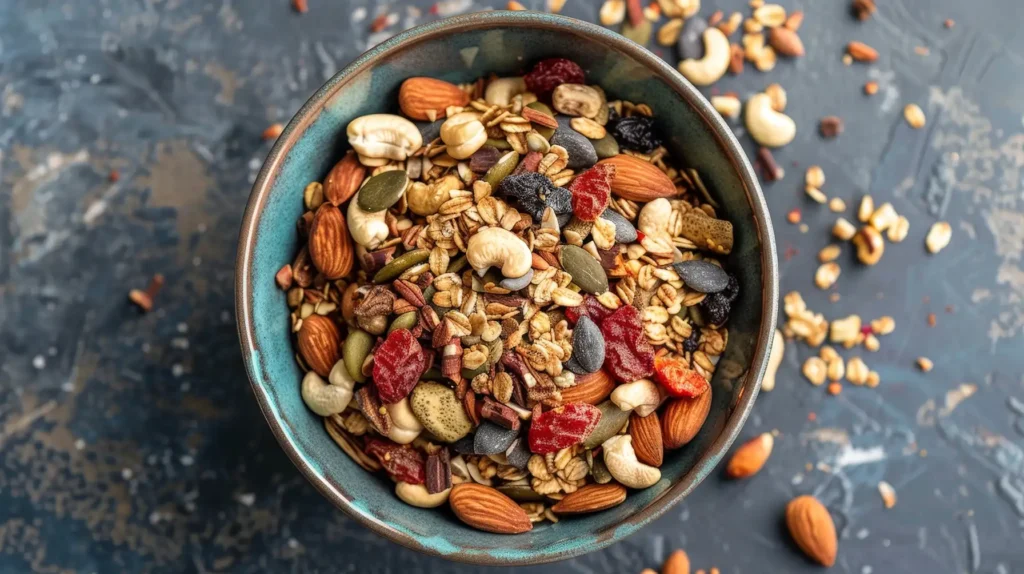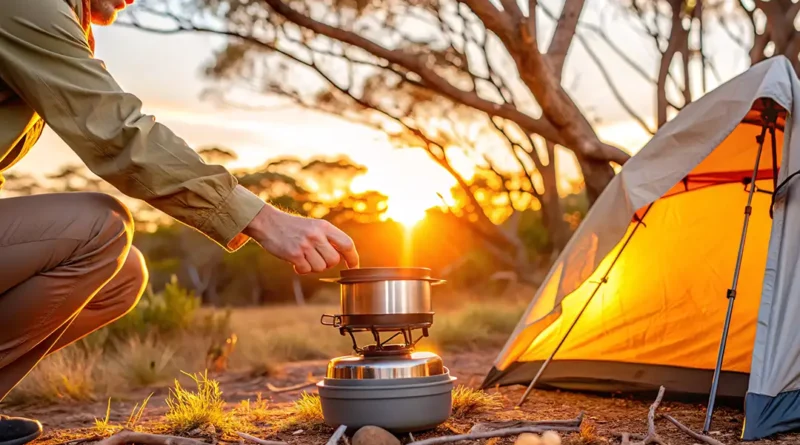Hiking Nutrition 101: How to Boost Your Energy and Reach New Heights on the Trail
Hiking Nutrition is more than just packing snacks—it’s the key to maintaining energy, stamina, and performance on the trail. Whether planning a quick day hike or a multi-day trek, knowing what to eat and drink can make the difference between a successful hike and an exhausting ordeal. This guide covers everything you need to fuel your hike, from meal planning to hydration strategies.
The Science of Hiking Nutrition
Hiking nutrition refers to the macronutrient balance (carbohydrates, fats, and proteins) and hydration strategies required to fuel outdoor activities effectively. Hiking is a physically demanding activity that requires proper fueling. Understanding the science behind hiking nutrition can help trekkers optimize their hiking performance and enjoyment.
Energy Expenditure on the Trail
The energy demands of hiking can be substantial. Depending on various factors, such as terrain, duration, and pack weight, the average hiker can burn up to 5,000 calories daily [1]. This high energy expenditure necessitates a well-planned nutrition strategy to maintain stamina and prevent fatigue.
During a hike, the body primarily uses a mix of carbohydrates and fats for fuel. At lower intensities, typical for most hiking scenarios, about 70% of energy comes from fat and 30% from carbohydrates [2]. This balance shifts as the intensity increases, with the body relying more on carbohydrates during steeper climbs or faster-paced sections.
Nutrient Timing for Optimal Performance
Proper nutrient timing is crucial for maintaining energy levels throughout a hike. Starting the day with a nutritious breakfast containing 300 to 500 calories at least an hour before hiking can significantly improve performance. This pre-hike meal should be high in carbohydrates, include some protein, and be low in fat and fiber to ensure easy digestion.
To delay fatigue and maintain endurance, aim to consume 30 to 60 grams (120 to 240 calories) of carbohydrates per hour [3] while hiking. Great snacking options include:
- Energy gels
- Dried fruits
- Powdered sports drinks
- Energy bars
Adapting Nutrition to Hiking Intensity
The nutritional needs of hikers can vary based on the intensity and duration of their trek. For longer, multi-day hikes, focusing on calorie-dense foods for backpacking that provide a good balance of macronutrients is essential. While carbohydrates are crucial for quick energy, fats significantly sustain energy provision during long hikes.
Protein for Muscle Recovery
Protein intake is also vital, especially for muscle repair and recovery. Aim for approximately 0.7 grams of protein per pound of body weight daily. This can be distributed throughout the day, by focusing on consuming at least 30 grams of protein with dinner to support overnight muscle recovery and reduce inflammation.
The Importance of Proper Hydration
Hydration and electrolyte balance are equally important aspects of hiking nutrition. Hikers can lose an average of 0.5L of sweat per hour, so replenishing fluids and electrolytes regularly is crucial. Electrolyte imbalances can lead to various issues, including dehydration, muscle cramps, and in severe cases, more serious health complications. Understanding how much water you need to drink while hiking or backpacking is essential to avoid running into unnecessary problems on the trail resulting from dehydration.
By understanding and applying these principles of hiking nutrition, trekkers can ensure they have the energy and nutrients needed to fuel their adventures effectively and safely.
Hiking Nutrition Strategies for Varying Terrains

Hiking nutrition needs vary significantly based on the terrain and environment. Adapting one’s fueling strategy to the specific challenges of different landscapes is crucial for maintaining energy levels and overall performance.
Flat Trails vs. Steep Inclines
The intensity of a hike dramatically affects calorie expenditure. On flat terrain, a 150-pound person burns approximately 80 calories per mile [4]. However, when tackling steep inclines, the calorie burn increases substantially. For every 1% increase in grade, the same person burns an additional 10 calories per mile [5], roughly a 12% increase. At a 10% grade, hikers can expect to burn more than twice as many calories as on flat ground.
To fuel increased energy demands, hikers should focus on high-calorie backpacking food. Nuts, nut butters, and oils are excellent options for packing maximum calories in minimal space. For hikes with steep inclines, consuming 30 to 60 grams of carbohydrates per hour to maintain endurance is recommended.
High Altitude Hiking Nutrition Considerations
At high altitudes, the body’s nutritional needs change significantly. Hikers often experience reduced appetite and increased energy expenditure. Research has shown that climbers can lose an average of 3.3 kg over 16 days at high altitudes [6]. This weight loss can reduce strength and stamina, potentially impacting performance.
At above 8,000 feet, the body burns more calories due to lower oxygen levels and colder temperatures. Consume more carbohydrate-heavy snacks, and prioritize hydration to combat altitude sickness.
To combat these effects, hikers should:
- Increase calorie intake: Aim for at least 60% of calories from carbohydrates.
- Maintain protein intake: Consume 20-30 grams of protein after exercise.
- Stay hydrated: Drink 3-5 liters of fluid daily.
- Consider electrolyte-rich beverages: These can be more effective than plain water at high altitudes.
Desert Hiking: Balancing Electrolytes
Desert environments present unique challenges, particularly concerning hydration and electrolyte balance. The risk of hyponatremia, a condition caused by low sodium levels, increases in hot weather when hikers consume large quantities of water without adequate electrolyte replacement. This is why eating salty snacks when hiking is important.
To maintain proper electrolyte balance:
- Use electrolyte tablets or mixes in water.
- Consume salty snacks throughout the hike.
- Monitor urine color as an indicator of hydration status.
- Consider using Salt Stick caps for easy electrolyte supplementation.
By tailoring nutrition strategies to specific terrains, hikers can optimize their performance and enjoyment on the trail.
Special Dietary Considerations for Hikers

Hikers with specific dietary needs can still enjoy nutritious meals on the trail. Whether following a vegan, vegetarian, gluten-free, or low-carb diet, proper planning ensures adequate nutrition for outdoor adventures.
Vegan and Vegetarian Trail Food Options
Plant-based hikers have numerous protein-rich trail food options to fuel their treks. Legumes, nuts, seeds, and whole grains provide essential nutrients. For instance, eating oatmeal, trail mix, a PB&J sandwich, and a bean-based dinner can easily provide over 80 grams of protein [4]. Vegan hikers should focus on nutrient-dense foods like quinoa, lentils, and leafy greens to meet their nutritional needs on the trail.
Gluten-Free Trail Nutrition
Gluten-free hikers can substitute traditional hiking food staples with alternatives like quinoa, brown rice ramen, or gluten-free oats. Many freeze-dried foods now offer gluten-free options. Using cornstarch or arrowroot as a thickener in your homemade hiking meals will provide a gluten-free consistency [5].
Low-Carb Hiking: Pros and Cons
While a ketogenic diet may offer benefits like sustained energy levels and lighter pack weight due to calorie-dense foods for backpacking, it comes with challenges. Low-carb diets may hinder performance during high-intensity activities [3] and at high altitudes. Hikers considering a low-carb approach should weigh these factors and consult a healthcare professional before making significant dietary changes for their trek.
Conclusion
Hiking nutrition is a crucial aspect of any successful trek, significantly impacting performance, endurance, and overall enjoyment of the outdoor experience. Proper meal planning is key to maintaining adequate nutrition on the trail, regardless of dietary preferences or restrictions. From pre-hike meals to post-hike recovery, each aspect of hiking nutrition supports physical performance and mental clarity during outdoor adventures. By applying these principles and tailoring them to individual needs and specific hiking conditions, hikers can ensure they’re well-fueled to take on whatever challenges the trail may present, ultimately enhancing their connection with nature and the overall hiking experience.
FAQs
Q: How can I boost my stamina for hiking?
A: To enhance your hiking stamina, gradually increase your daily step count and incorporate varied terrains in your walks, such as hills and valleys. Additionally, consider adding steady-state cardio exercises to your routine to improve your endurance significantly.
Q: What should I eat to keep my energy up while hiking?
A: To maintain energy during hikes, consume balanced meals that include proteins, fruits, vegetables, and carbohydrates like rice or pasta. Ensure you eat enough calories throughout the week to prevent energy depletion during your hikes.
Q: What are the best snacks to eat for energy while hiking?
A: Excellent energy-boosting snacks for hiking include nut-butter stuffed dates, which are rich in fiber, protein, and fats. Other great options are hassle-free fruits like apples, fruit purees, jerky, and energy gels for hiking, all of which provide sustained energy for your activities.
Q: What foods should I carry for endurance hiking?
A: For endurance hiking, it’s best to pack non-perishable, lightweight, and nutrient-dense foods. Good choices include trail mix, nuts, seeds, nut-based bars, nut butter packs, and fresh fruits like apples, bananas, and oranges that don’t need refrigeration. Consider powdered and freeze-dried foods to maximize caloric density while minimizing weight in your bear canister.
